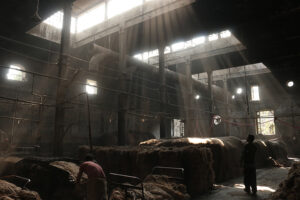



http://inscapehowrah.taxiart.net
The history of Howrah city dates back over 500 years. It is Calcutta’s sister city on the other side of the Hooghly river. It gained its importance with the opening of railways in 1854. Today, Howrah Station is not only the largest railway terminus in India, but all important access roads leading into the agglomeration from the west and south pass through Howrah. However, the history of the town has much more to it than just the history of tracks. In the mid-19th century, Howrah was the nucleus of industrialization in India. West Bengal’s second largest city in terms of both area and population, Howrah has played a vital role in the economy of both the state and the country as a whole, and its industrial heritage is an enviable one.
In Howrah, the industrial revolution set in at the same time as it did in the Ruhr area. Major industrial areas in the district include Belilious Road, Shibpur, Uluberia, Sankrail, Domjur and Bauria. Development, however, appears to have stopped in its tracks.
Large number of migrant and immigrant labour force from the rest of the state’s rural areas as well as neighbouring states take refuge in Howrah. The economy of the city mainly depends on the small scale industries, textile industry and iron and steel industry. The various kinds of textiles that are manufactured in the city are jute, cotton, silk and handloom. Mute or “Go en fiber” is the most inexpensive fiber that is available in the market. There are also small engineering firms all over Howrah, particularly around Belilios Road area near Howrah station.
Inscape Howrah is an ongoing interactive documentary project through the web which enables the user to have the experience of navigating through their stories via clusters of information, combining photography, audio and video.